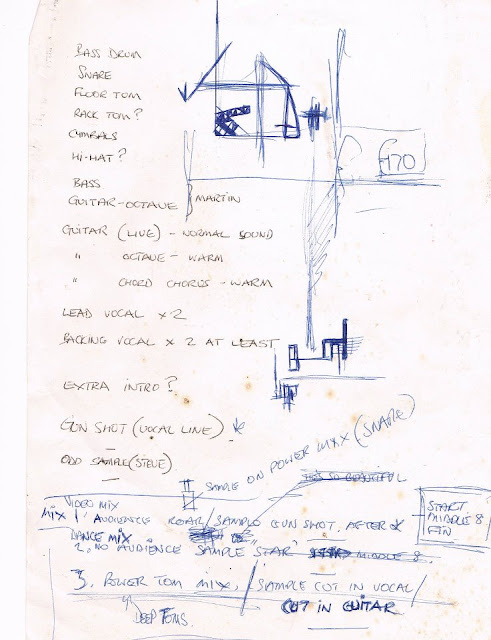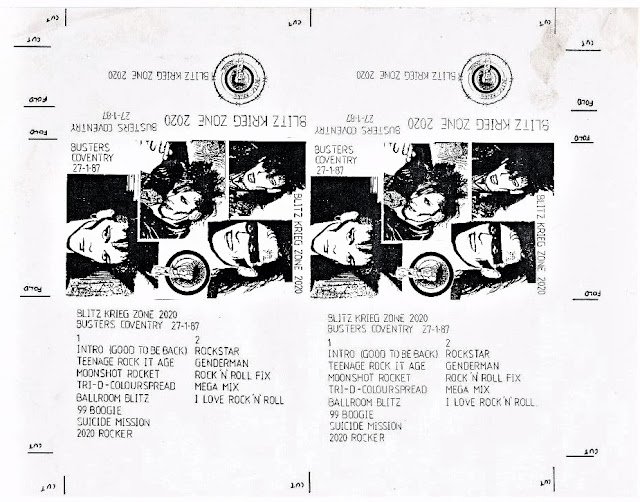Line-ups have varied over time between a folk duo and a six-piece rock band.
Obviously some Parrots lasted longer than others. A BPS biographical flow chart would need to include the following:
Drummers:
Rob Lockington
Jeff Powles
Dave “Vance” Anderson
Jim Pryal
Lead or Rhythm Guitar:
Arnold Chave
Tez Tehegee
John Walker
Dave Blundy
Vocals:
Graham Caldicot
Geoff Veasey
Arnold Chave
Eddie Jones
Mick Harris
Guitar – Electric / Acoustic / Bass:
Barry Ousby
Martin “Mandrago” Smalldon
Arun Bhandari
Keyboards & Accordian:
Mick Harris
Eddie Jones
Mandolin & Banjo:
Mick Harris
Fiddle:
Eddie Jones
Also from their excellent website – (now defunct)
The brief career of Black Parrot Seaside began in Richmond Street in Coventry where a few members taped an extremely silly version of Marc Bolan’s Telegram Sam called Baggy Leaf Dwarf. The original line up consisted of drums, bass, lead, keyboards and two vocalists.
Influences – Alex Harvey, Bonzos, Edgar Broughton, Heavy Metal Kids and Monty Python. Many line up changes (see below) and at the time of the recording the band moved from Rock to Folk. but the stage act remained out of the ordinary. It featured sea shanties, monologues, Marston’s Bitter, Rolf Harris impersonations, and much more.
The immortal “Roll it Up and Eat It” was nearly a landmark in vinyl history. It was released, or rather escaped, in 1978. An early picture disc, it was recorded on Zama Records by Coventry band Black Parrot Seaside. The sleeve also credited “The Exploding Sheep” but they were in fact, entirely mythical.
At that time, the band had attracted a modest local following with self-penned tributes to working Midlanders such as “The Wag of Shop 14” or “On Bedduth Bank”. The Wag celebrated Coventry’s commuting armies of early morning assembly line workers, in the days when the city still had car factories. At the end of it, overalls and cow gowns were donned as the band clanked out a “Spanner Shanty” using monkey wrenches.
Of the album tracks however, the late, great John Peel liked “I am a vacuum cleaner” so much he played it on his late night Radio One show. Record Mirror described this track as “A classic”, whilst Melody Maker advocated that another song, “The Whistler” should receive, “The Harpo Marx Award for the best whistling on record since The Rolling Stones – Walking The Dog ”.
Even the normally staid Coventry Evening Telegraph praised B.P.S. and their “Dull Wave” music as:
“ One of the silliest, craziest and most original ideas to hit the music scene in years.”
It was just the band’s luck after such rave reviews that the debut single should be launched in exactly the same week as the debut singles of Squeeze and Kate Bush. Though BPS shared a few column inches with them both in the Music Press that week, it was about the only thing they did have in common thereafter!
Blues featured heavily in the early years, and the band covered . “All Round Man “a Bo Carter original which was mildly obscene. Another popular blues was “In the Wee Midnight Hour,” first recorded by Scrapper Blackwell. John Lee Hooker’s “Dimples” and a version of “Bring It On Home,” also featured in early set lists.
BPS line-ups have varied over time between a folk duo and a six-piece rock band.
BPS in the 70’s
Pete Clemons brother in white.
.jpg)









































